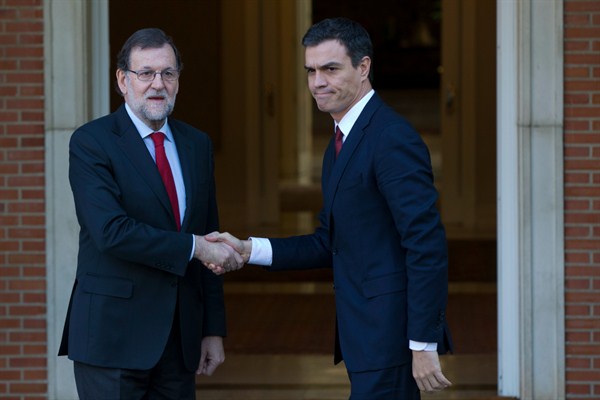Spaniards went to the polls last Sunday to cap an electoral campaign dominated by the economy, corruption charges and a stand-off between Madrid and the separatist region of Catalonia. The results broadly confirmed what many had predicted: a win for the incumbent government of Mariano Rajoy of the conservative Popular Party (PP), but uncertainty over whether Rajoy will be able to form a government.
Despite being the clear winner with 28.7 percent of the vote—enough to score 123 out of 350 parliamentary seats—the PP lost its absolute majority. The social democratic Spanish Socialist Party (PSOE) came in second with 22 percent of the vote, enough for 90 seats, followed by the two upstarts in Spanish politics: leftist Podemos and centrist Ciudadanos with 20.6 percent of the vote, and 69 seats, and 13.9 percent and 40 seats, respectively. Podemos and Ciudadanos are newcomers to the political scene, ushered in by the unpopularity of the austerity measures imposed by Rajoy since 2011 to revive a battered economy. Their impressive showing, winning about a third of all votes cast, is a testament of how serious a challenge the two parties pose to the PP and the PSOE, which have dominated politics in Spain since the country became a constitutional democracy in 1978.*
What could emerge from negotiations for a new coalition government, which would be a novelty for Spain, is far from clear. In electoral outcomes over the past three decades, the PSOE or the PP have either obtained an outright parliamentary majority or gained a near majority, requiring only the incorporation of small parties to form a government. This time there is no shortage of alternative scenarios for how a new government might be cobbled together.

